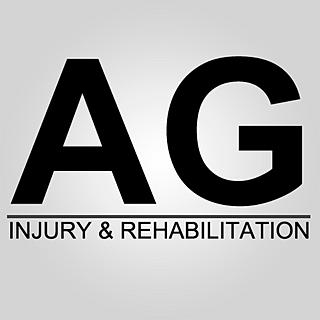Acromioclavicular Joint Sprain AKA Dislocated Collarbone
- Arun Gray
- Sep 17, 2017
- 2 min read
During my first month as the first team sports therapist at Boston Town FC, I've already seen a range of injuries from a dislocated thumb to medial ankle ligament sprains. During this weekend's heroic FA Cup victory against Dereham Town FC, our goalie suffered an acromioclavicular joint separation after landing heavily on his shoulder whilst collecting a cross. As usually, sticking to evidence based practice, I've been reviewing some of the literature ready to get the most out of his rehab so thought I may as well share a bit of info about the type of injury and what it actually means.

What is it?
The acromioclavicular joint (ACJ) in simple terms is the joint that holds the collar bone to your shoulder. It's held together by the acromioclavicular ligament and the coraclavicular ligaments which effectively hold your collar bone down and connect it with your shoulder blade... kind of. The joint is involved in overhead and across body movements of your arm as well as transferring forces through your body during lifting, pushing and pulling movements.

Injury to the ligaments occurs when they are overstretched, often due to an excessive force being put through the joint; in this case it was landing directly onto the shoulder from height. As shown below, a sprain of the ligaments as always is categorised from grades 1 to 3, with a complete rupture being a grade 3, causing the joint separation. The severity of the injury depends on a) if the ligaments have fully ruptured and b) if both the acromioclavicular and coraclavicular joints have both been injured. If on assessment the clavicle is clearly displaced, it is highly likely that both ligaments have suffered some damage. It can sometimes more commonly be classed as a dislocated collar bone.
An X Ray is required to assess the position of the bones and an MRI scan will often follow this up to assess ligament damage and review the requirements for surgery.

AC Joint Injury Recovery
Again, the recovery time for an ACJ injury depends heavily on it's severity. Surgery is sometimes required to repair the damage of the ligaments and reposition the bones at the joint. Recovery can be complicated due to the wide range of movement available at the shoulder, but rehabilitation will concentrate on regaining full range of motion, strength, power and endurance. Functional training will follow on from this along with proprioception to both help the injury to repair and arguably more importantly; prevent reinjury.
Returning to sport often extends the full recovery time of an injury because the athlete must ensure they will not suffer a reinjury when re-exposed to the demands of the sport. This is extremely important in sports that heavily rely on the performance of the shoulder joint - in this case playing as a goalkeeper!
I hope that brief overview of AC joint injuries makes sense and explains what structures are involved. I'd appreciate any feedback in the comments box below! Alternatively, if you suffer from shoulder injuries past or present, please get in touch for an assessment and/or rehab programme.








Comments